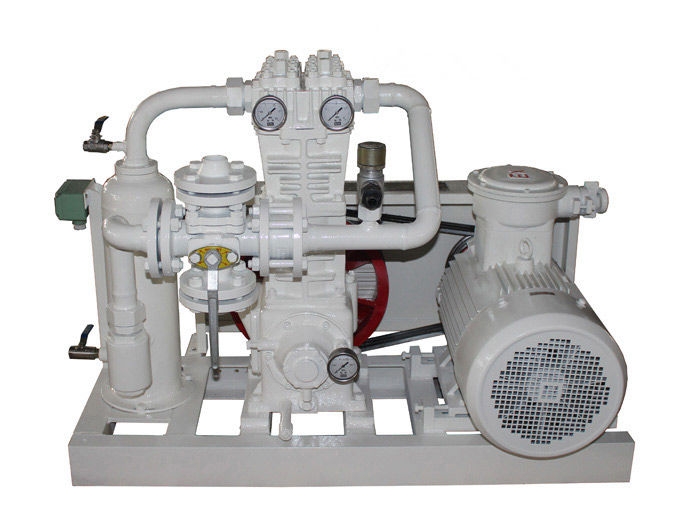Journey with Air Compressor Piston Ring Replacement

Hey there, DIY enthusiasts and fellow tinkerers! If you’ve landed on this page, chances are you’re curious about air compressor piston ring replacement and how to tackle this essential maintenance task. Well, you’re in luck because I’ve been down that road, and I’m here to share my experience with you. In this article, we’ll go through everything you need to know about replacing piston rings in an air compressor. So, grab your tools, and let’s get started!
Understanding the Importance of Piston Rings
Before we dive into the nitty-gritty of replacement, let’s take a moment to understand why piston rings are crucial in an air compressor.
The Seal of Efficiency
Piston rings are circular bands made of metal or other durable materials, and their primary job is to create a seal between the piston and the cylinder wall. This seal is essential for maintaining the compression of air within the cylinder during the compression stroke.
The Compression Process
When your air compressor runs, the piston moves up and down inside the cylinder. During the downstroke, air is drawn into the cylinder, and on the upstroke, the air is compressed. The piston rings ensure that this compression is efficient by preventing air from escaping back into the low-pressure side.
Signs That It’s Time for Replacement
Before you start the replacement process, you’ll want to identify when your piston rings are due for a change. Here are some common signs:
1. Reduced Compression
If you’ve noticed a drop in your compressor’s ability to reach and maintain the desired pressure, it might be due to worn piston rings.
2. Increased Oil Consumption
Excessive oil consumption can be a sign that the piston rings are no longer sealing properly, allowing oil to pass into the compressed air.
3. Poor Performance
Your compressor might struggle to start or stall frequently if the piston rings are no longer doing their job.
4. Unusual Noises
Unusual knocking or rattling sounds during operation can be an indicator of piston ring issues.
Step-by-Step Guide to Replacing Piston Rings
Now that we’ve covered the basics, let’s get into the step-by-step process of replacing piston rings in your air compressor.
Step 1: Gather Your Tools
Make sure you have all the necessary tools and safety equipment. You’ll likely need a wrench, socket set, pliers, piston ring pliers, a piston ring compressor tool, and replacement piston rings.
Step 2: Prepare Your Workspace
Ensure you have a clean, well-lit workspace to operate in. Lay down some clean rags or towels to keep everything organized.
Step 3: Disconnect and Drain
Before you start any work, disconnect the compressor from the power source and release all the air pressure from the tank. Safety first!
Step 4: Remove the Cylinder Head
Using your wrench or socket set, carefully remove the cylinder head. This will expose the piston and cylinder.
Step 5: Remove the Piston
Gently slide the piston out of the cylinder bore. Be cautious not to damage the piston or cylinder walls during this process.
Step 6: Extract the Old Rings
Use piston ring pliers to carefully remove the old piston rings. Take note of the orientation of the rings, as you’ll need to install the new ones in the same way.
Step 7: Install the New Rings
Carefully place the new piston rings in their proper positions on the piston. Make sure they are properly seated and that there are no gaps.
Step 8: Use the Piston Ring Compressor
Slide the piston ring compressor tool over the piston and rings. This tool helps compress the rings, making it easier to insert the piston back into the cylinder.
Step 9: Reassemble
Gently slide the piston with the compressed rings back into the cylinder bore. Ensure that it goes in smoothly without any obstructions.
Step 10: Reattach the Cylinder Head
Carefully reattach the cylinder head, ensuring that all bolts or screws are properly tightened.
Step 11: Test and Monitor
Reconnect the compressor to the power source and turn it on. Monitor the compressor for any signs of leaks, unusual noises, or performance issues.
Frequently Asked Questions (FAQs)
Let’s address some common questions about air compressor piston ring replacement.
Q1: How often should piston rings be replaced?
A: The frequency of replacement depends on usage and maintenance. In general, with proper care, piston rings can last several years before needing replacement.
Q2: Can I replace piston rings myself, or should I hire a professional?
A: If you’re comfortable with basic mechanical tasks and have the necessary tools, you can replace piston rings yourself. However, if you’re unsure or uncomfortable with the process, it’s best to consult a professional technician.
Q3: Can I reuse old piston rings?
A: Reusing old piston rings is generally not recommended. Worn rings may not provide an effective seal, which can lead to reduced compressor efficiency and performance.
Q4: Where can I find replacement piston rings?
A: You can find replacement piston rings at automotive supply stores, online retailers, or through the manufacturer of your air compressor.
Conclusion
In conclusion, replacing piston rings in your air compressor is a manageable DIY task that can significantly improve the performance and efficiency of your compressor. Understanding the signs that it’s time for replacement and following the step-by-step guide can help you complete this maintenance task successfully.
Remember that regular maintenance is key to keeping your air compressor running smoothly. So, don’t hesitate to give those piston rings the attention they deserve. Your compressor—and your projects—will thank you for it!
For a wide range of compressors, including process compressors and nitrogen compressors, check out CN Compressors. Happy compressing and maintaining your air compressor!
